Release time:2025-05-26 16:24:38Clicks:author:SPG ArcheryMain categories:Bows, Arrows, Archery Accessories
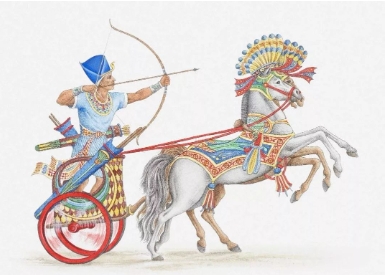
Ancient Egyptian bows and arrows
Ancient Egyptian bows were relatively sophisticated in the world's ancient history. The bows of the Egyptians in the New Kingdom were generally made of round wood strips. The length was 5 to 5.5 feet, thick in the middle and gradually tapering at both ends.
There are also bows made of composite materials, with antelope horn pieces embedded in the wooden bow, covered with a tendon, and various composite parts tightly wrapped around the wooden bow with palm bark.
Composite bows are powerful and have a long range, but are not easy to pull open. The length of the arrow shaft varies from 22 to 34 inches. The arrow shaft materials include wooden sticks, reeds, etc., and metal arrows, usually with three feathers as tail wings.
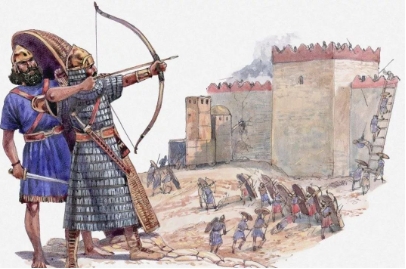
Assyrian bows and arrows
The length of the Assyrian bowstring is generally shorter than that of the Egyptian bow, with the longest being about 4 feet. The bow is made of wood, and the Assyrian bow is divided into angular bows and curved bows. The angular bow is the same thickness throughout the bow, while the curved bow is thinner from the middle to the ends, and the angular bow is smaller. It is also rarely used.
Both bows have peony knots (later carved into duck heads) at both ends, and grooves are carved near the knots to hang the bowstring. The bow can be carried on the back or in a scabbard. The Assyrian arrow shafts are straight and thin, probably made of reeds or light wood. The arrowheads are made of bronze or iron.
The arrowheads are diamond-shaped and flat. There is a raised line in the arrowhead to increase the strength, and there is a hole at the bottom to embed the arrow shaft. The tail of the arrow has two feathers and a groove at the end to facilitate the placement on the bowstring.
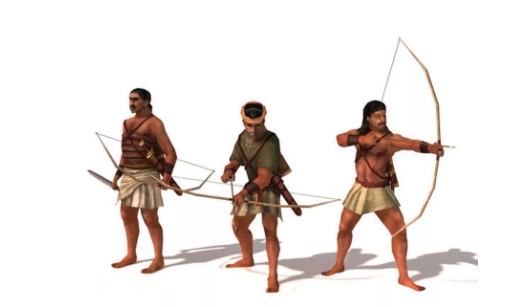
Ancient Indian bows and arrows
Bronze arrowheads from the Indus Civilization period (about 2300-1750 BC) have been found in the archaeological materials that have been excavated. The arrow was a weapon commonly used by all arms in ancient India.
The typical Indian bows and arrows are recorded in detail in the "Arrow Parable Sutra" of the "Middle Agama Sutra": the materials of the bow are rotten, mulberry, and pine. The bow is made of ox tendon, camphor deer tendon and silk, and the bowstring is made of tendon, silk, silk, and hemp; the arrow is wrapped with ox tendon, camphor deer tendon and silk; the arrow feathers are flying feathers, carved crossbow feathers, and crane feathers; the arrow marrow is pregnant with spicy spears and plated knives; the bow color is black, self, red, and yellow.
Ancient Indian bows and arrows with war elephants
According to historical records, when the Persian king fought against the invasion of Alexander (about the seventh century BC). The bows of the Indian waste period were made according to the height of the user. The bow was very hard. When pulling the bow, one end needed to be supported on the ground, the left foot stepped on the man, and both hands pulled the Hong. The arrow was three kubi cast (elbow) long. This kind of bow and arrow has great penetrating power, and it can penetrate ordinary shields and armor at that time. According to the "Political Theory", the names of the bows in the New Maurya Dynasty were: Invite Rama Invite, Bridge Danta, Truna, etc. They are made of palm, bamboo, wood or animal horns. The bowstrings are made of vine fiber, bamboo fiber and sheep intestines. Arrows include bamboo arrows, wooden arrows, and iron arrows. Arrows are made of iron, bone, and wood, and have the functions of piercing, cutting, and hitting.
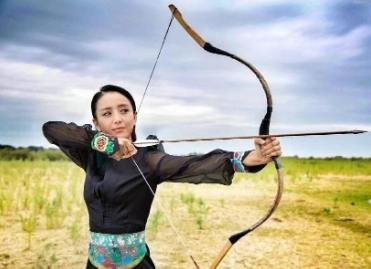
Chinese bow
An ancient archery instrument. Originated in primitive society, it was initially made by tightening branches with ropes. After that, each generation has developed in production technology, and there are strict regulations on material selection, ingredients, and production procedures.
The original bow-making material was a single material, made of bamboo and wood, and later developed into a composite material, generally composed of animal horns, tendons, bamboo and wood, silk, lacquer, glue, etc.
There are many types of bows. For example, in the Spring and Autumn Period and the Warring States Period, there were six types of bows: Wang bow, arc bow, clip bow, Geng bow, Tang bow, and big bow. Wang bow and arc bow are used for defending cities and chariot battles; clip bows and waste bows are used for hunting and flying birds.
In the Han Dynasty, there were Hujia bows, carved bows, horn bows, road bows, and Jiang bows. In the Tang Dynasty, there were four types of bows: longbow, horn bow, short bow and lattice bow. Longbow was used by infantry, horn bow was used by cavalry, short bow and lattice bow were used by imperial guards.

English longbow
British bows and arrows in the Middle Ages. In the 13th century, Britain vigorously developed archery troops and improved bows, gradually replacing crossbows with longbows. Longbows were made of elm, stick wood and basil, and later mainly of yew.
The best yew wood was not produced in Britain, but imported from Italy and Spain. The longbow was 6 feet long and the arrow was 3 feet long. The middle of the bow body where the hand holds it is 1_5 inches wide, gradually tapering towards the two ends. The two ends of the bow are inlaid with horn material.
The front of the bow frame is round and the back is flat. The range of the longbow is twice that of the crossbow, up to 400 yards, and the effective range is close to 250 yards, and the shooting rate is much higher. 10 to 12 arrows can be fired per minute. In the hands of skilled British soldiers, the longbow has a much higher hit rate than the crossbow. The disadvantage of the longbow is that the bow is too hard and requires high technical requirements. It must be mastered by archers who have undergone long-term training.
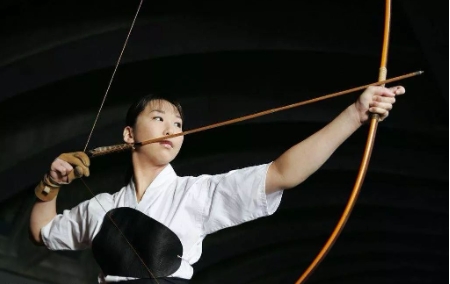
Japanese wagyu
A type of longbow used in Japanese Kyudo. The standard wagyu is about 2.2 meters (7 feet 3 inches) long. The ancient wagyu was called "big bow", which refers to all longbows with a total length of more than two meters.
There is another type of bow that is shorter than the wagyu, called "half bow" (about 45 to 160 cm). The user holds the bow mainly at the lower arc part of the bow, and the length ratio is one-third of the full bow.
The wagyu was originally made of bamboo and wood and assembled with swim bladder (a kind of glue material). Now most bamboo bows are made of glass fiber reinforced plastic.